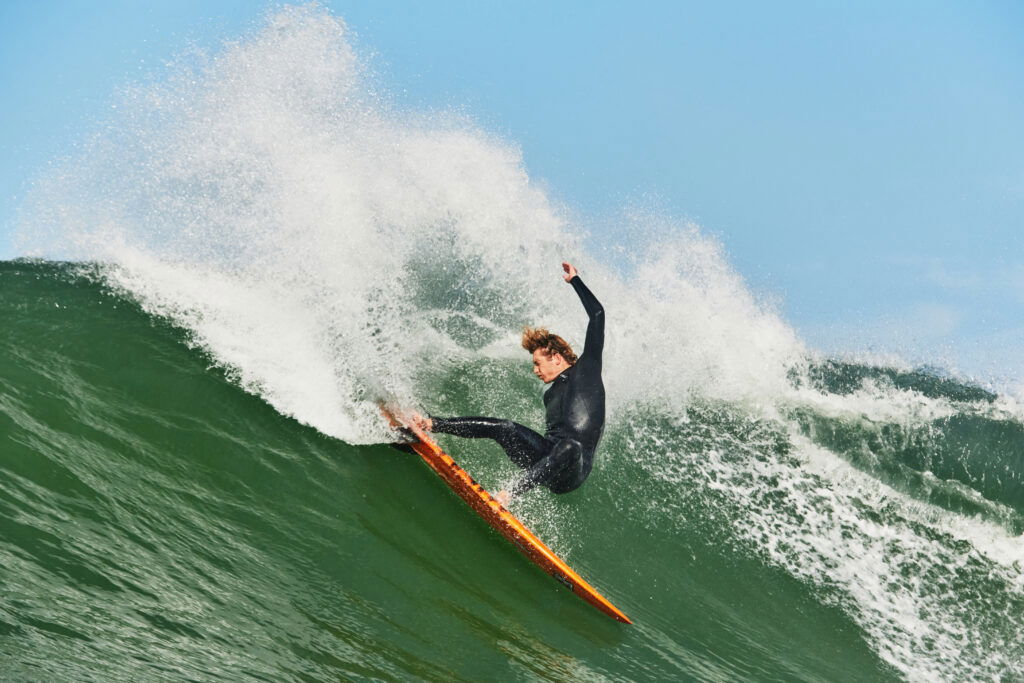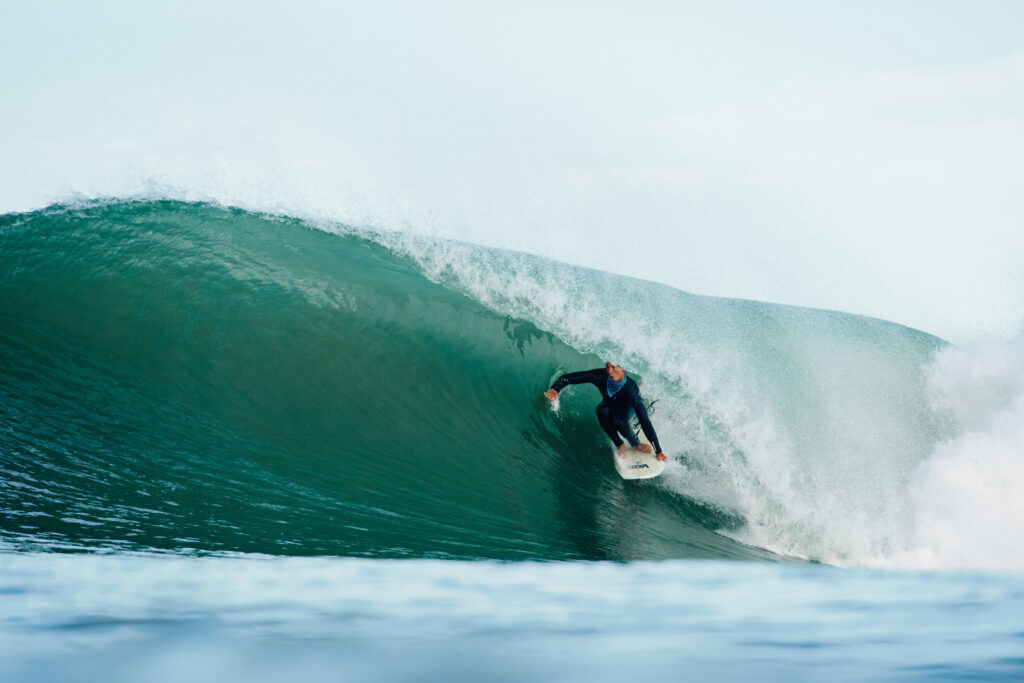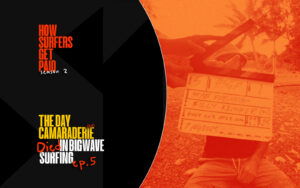William Aliotti and 27 of His Friends Will Make You Want to Jump on a Twinnie
Inside the inaugural Twin Fin Invitational.
Just recently, I arrived at the beach to find a group of unprofessional surfers putting together a makeshift contest, and by “contest,” I mean a banner and a couple of coolers filled with beers.
In the water, they rode long, narrow, inefficient boards from the early 1990s in zippy closeouts, documenting every tail-drop floater with obsolete Mini DV cameras. Have we become so disillusioned with the present — and the approaching future — that we’re desperately reaching for a past we never fully experienced?
If boardshort lengths, tribal motifs, and jizzy fonts are any indication, it sure seems that way. Or maybe it’s just a reaction to the sanitized version of competitive surfing that has been, often insincerely, shoved down our throats.
A few minds, however, are cooking up antidotes to the overproduced surf contest. William Aliotti, a staunch twin-fin segregationist who fell in love with the design six years ago after Ryan Lovelace shaped him one, managed to assemble an impressive crew for a two-day event in Seignosse, just a short bike ride north of Hossegor.
“I invited some of the world’s best free surfers, paid for their flights and a week’s accommodation (to help with jet lag), because they’d never have come otherwise!”

Both enamored with the area and charmed by the format, a carnivorous vlogger from Raglan, New Zealand, remarked, “It’s good to see that there’s this community of people that don’t ride thrusters — and they’re a lot nicer people, actually.”
Despite being four decades older than Simon Anderson’s design, twin-fins, under the right feet, have been surfed in ways that feel so modern — and appropriate — in recent years.
“You get on these boards, and you do so much weird stuff,” Chippa Wilson said. “They allow you to draw different lines. The sheer speed out of them makes you do tricky stuff and lets you get a little more creative.”
The 28 participants — hardly comp guys or gals — had access to the best bank in the area and favorable winds throughout the event. Each invitee surfed three mixed-gender heats per day and was encouraged to swap boards between them. Beyond equipment limitations, the only judging criteria were style, flow, and innovative maneuvers — SFIM, a fitting onomatopoeia for a twin-fin slicing through water. No scores were given at the beach.
William had participated in other invitational contests, which gave him the idea for this format. “I went with a different approach to judging because, in the end, we’re all free surfers.”

Judging decisions were reserved for the evenings, discussed over event-branded tins in front of a large screen where highlights were compiled into daily edits. The competitors themselves, along with the filmers, voted on who delivered the most convincing performances.
Ainara Aymat and Victor Bernardo were unanimously deemed winners, each taking home an oversized $5k check. Yet, there were several entertaining and standout performances across the field. “If we had to pick 2nd, 3rd, and 4th, it would’ve been impossible,” William said. “But in the end, Victor stood out and surfed amazingly with style and flow, making everything look so easy. And Ainara killed it on her backhand too!”
This event adds to a growing stack of invitationals providing a stage for free surfers who usually don’t compete. But as they continue, one has to wonder: will they become the very thing they’ve been resisting all along?














Comments
Comments are a Stab Premium feature. Gotta join to talk shop.
Already a member? Sign In
Want to join? Sign Up